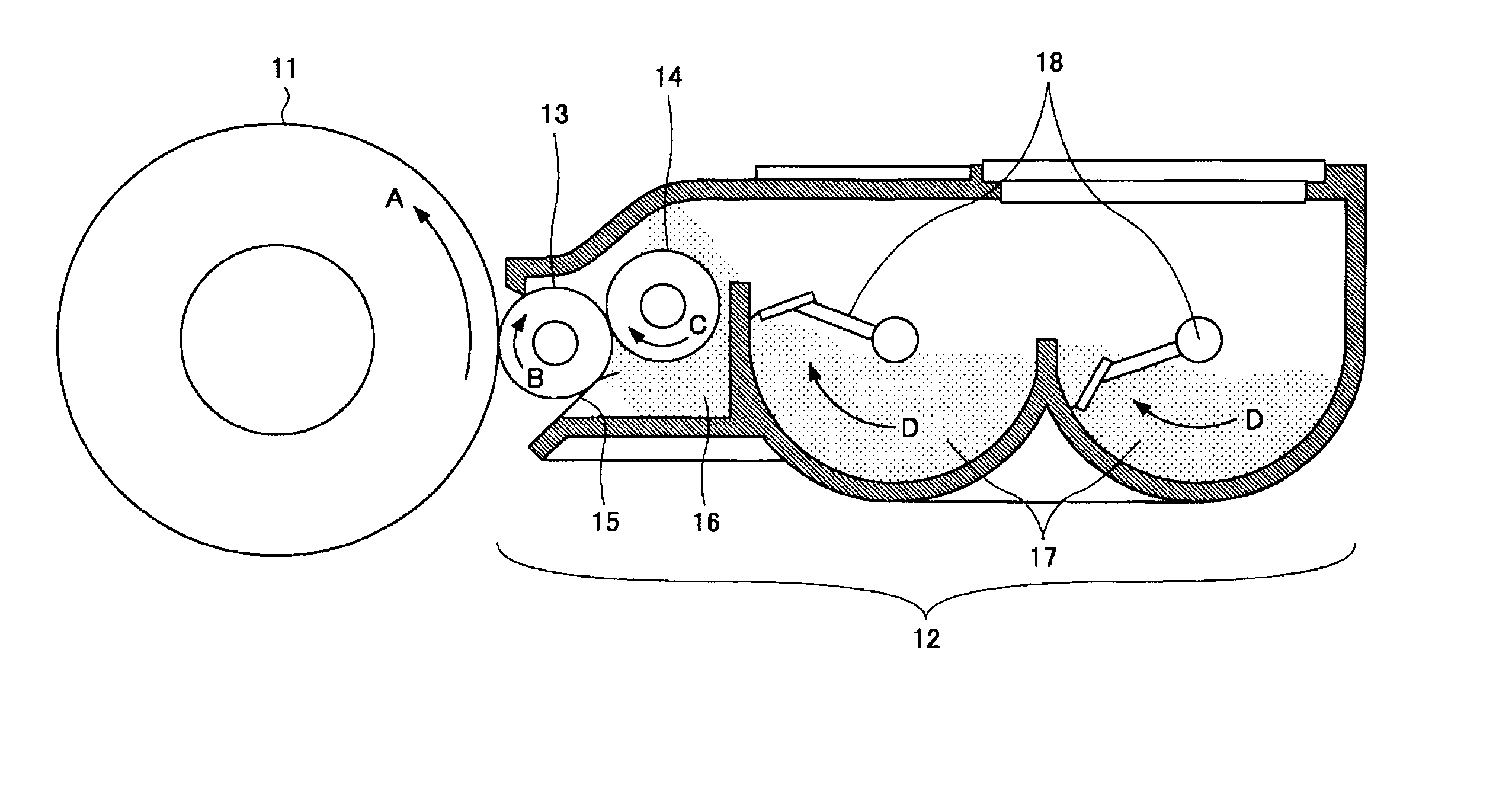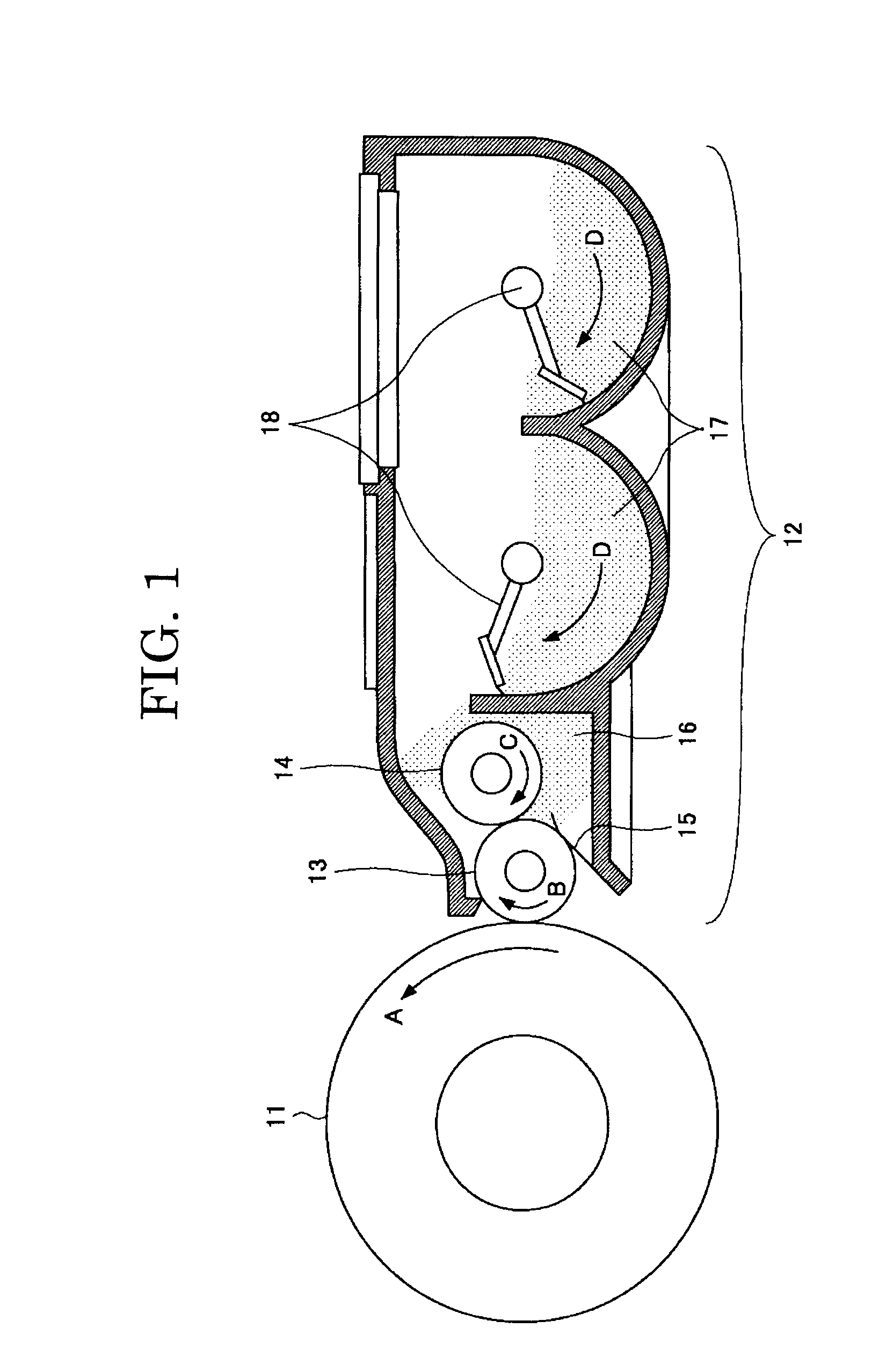Developing device, image developing method, image forming apparatus, image forming method, and process cartridge
a development device and development method technology, applied in electrographic process devices, instruments, optics, etc., can solve the problems of difficult to obtain constant quality images, disadvantages of using two-component developers, and compact development devices,
- Summary
- Abstract
- Description
- Claims
- Application Information
AI Technical Summary
Benefits of technology
Problems solved by technology
Method used
Image
Examples
example 1
[0102] Hereinafter, the embodiment of the present invention will be further described in detail referring to specific Examples and Comparative Examples, however, the present invention is not limited to the disclosed Examples.
(Preparation of Primary Binder Resin)
[0103] As a vinyl monomer, 600 g of styrene, 110 g of butyl acrylate, 30 g of acrylic acid and as a polymerization initiator, 30 g of dicumyl peroxide were placed in a dripping funnel. In a 5-liter four-opening flask equipped with a thermometer, a stainless-steel stirrer, a falling condenser and a nitrogen inlet tube, as polyols among polyester monomers, 1,230 g of polyoxypropylene (2.2)-2,2-bis(4-hydroxyphenyl) propane, 290 g of polyoxyethylene (2.2)-2,2-bis(4-hydroxyphenyl) propane, 250 g of isododecenyl succinic anhydride, 310 g of terephthalic acid, 180 g of benzene-1,2,4-tricarboxylic anhydride, 7 g of dibutyltin oxide as an esterified catalyst and 340 g (11.0 parts by mass to 100 parts by mass of the monomer) of para...
PUM
 Login to View More
Login to View More Abstract
Description
Claims
Application Information
 Login to View More
Login to View More - R&D
- Intellectual Property
- Life Sciences
- Materials
- Tech Scout
- Unparalleled Data Quality
- Higher Quality Content
- 60% Fewer Hallucinations
Browse by: Latest US Patents, China's latest patents, Technical Efficacy Thesaurus, Application Domain, Technology Topic, Popular Technical Reports.
© 2025 PatSnap. All rights reserved.Legal|Privacy policy|Modern Slavery Act Transparency Statement|Sitemap|About US| Contact US: help@patsnap.com


